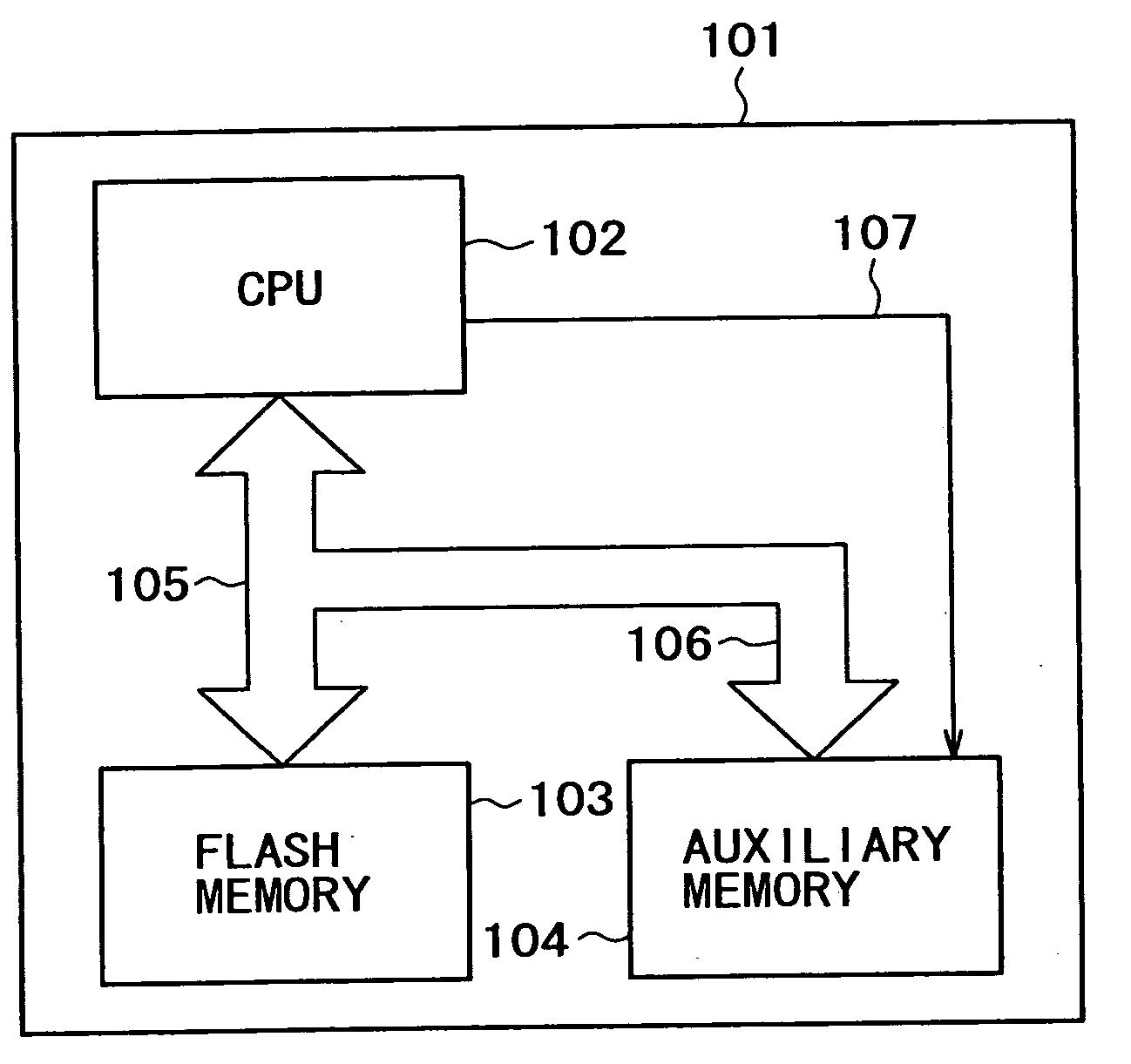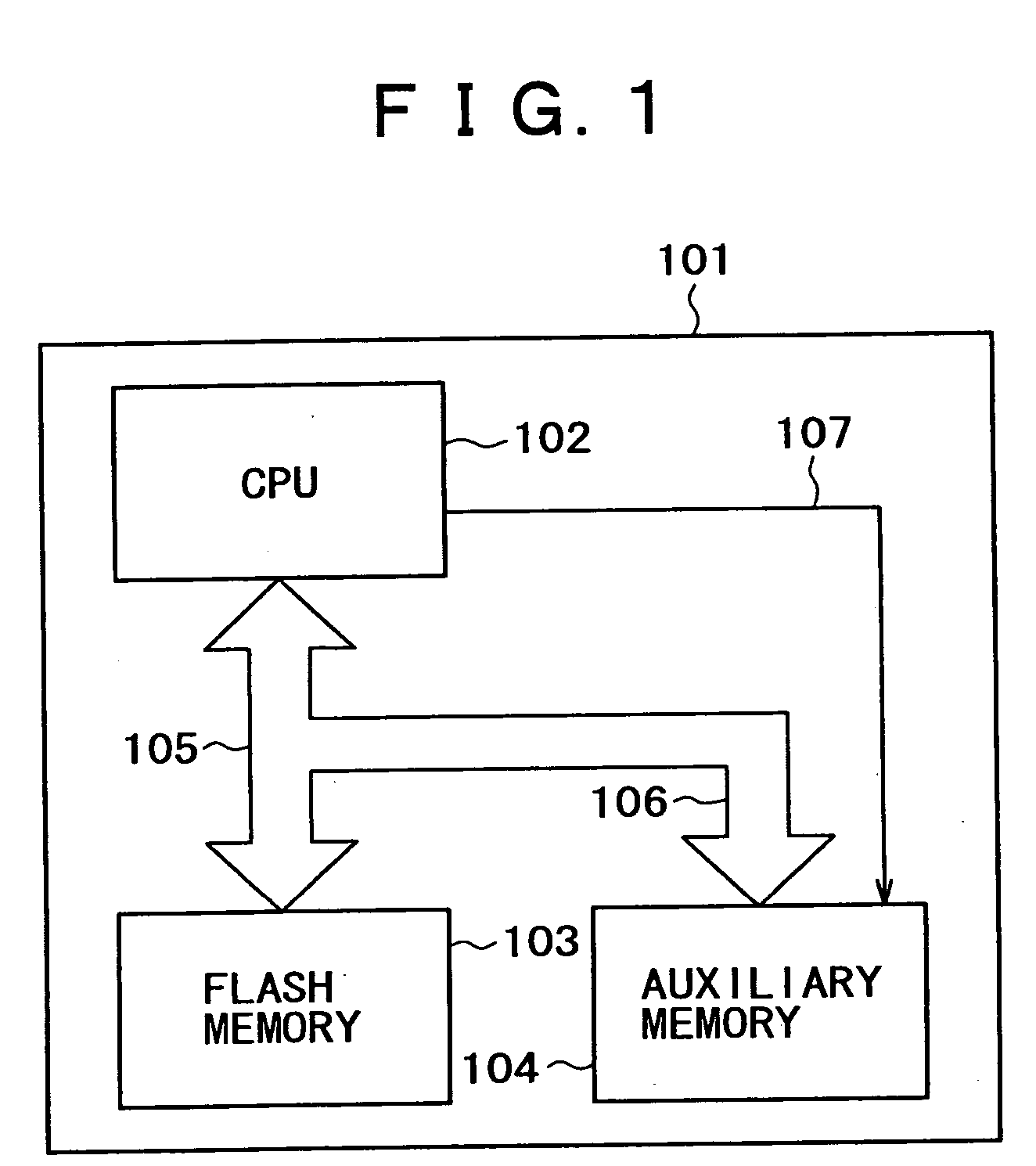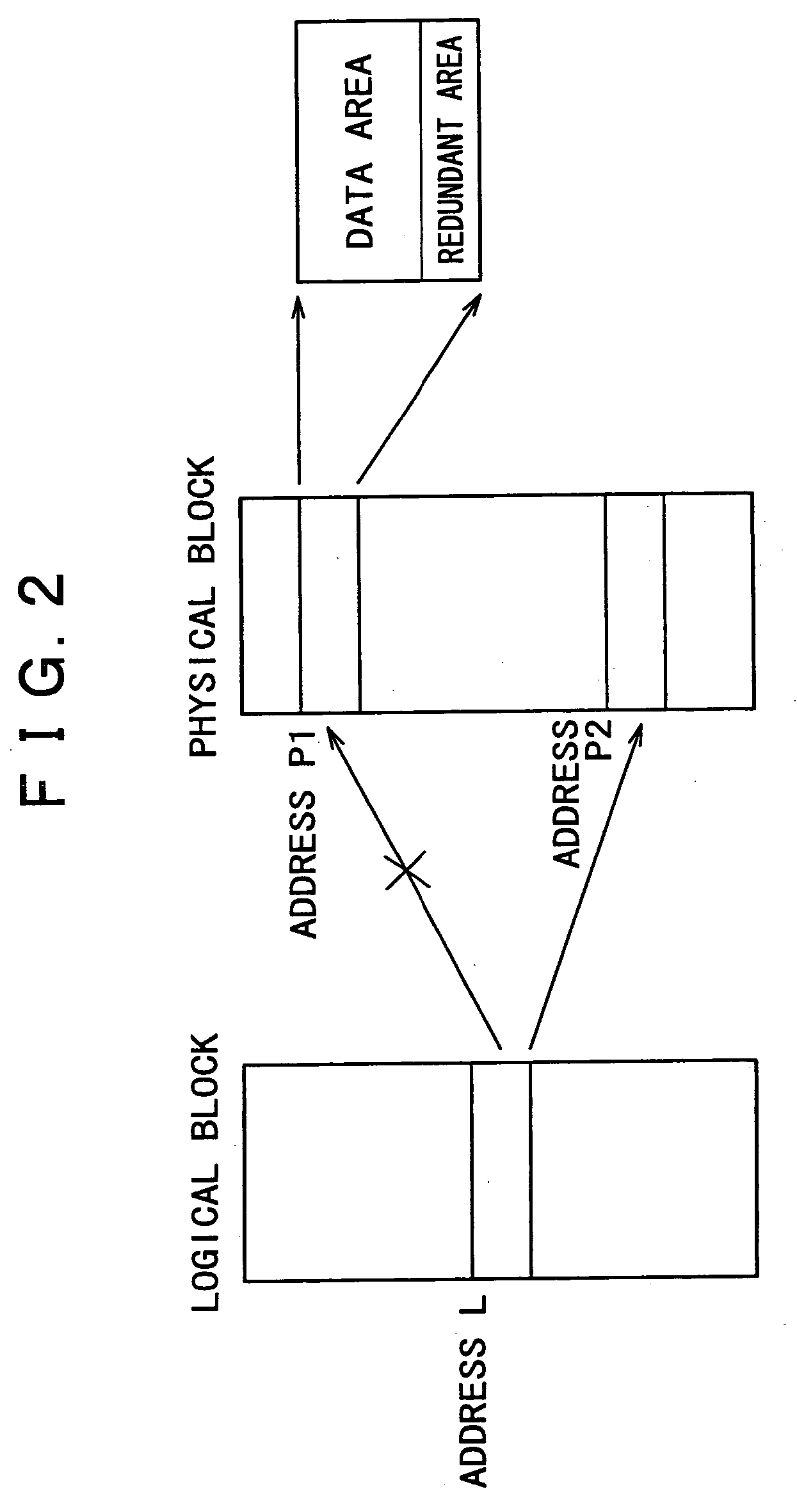Non-volatile memory and non-volatile memory data rewriting method
a data rewriting and non-volatile memory technology, applied in the field of non-volatile memory and data rewriting methods, can solve the problems of complex system construction, part of data stored in flash memory can be destroyed, complex system needs to be constructed, etc., and achieve the effect of facilitating the management of empty blocks
- Summary
- Abstract
- Description
- Claims
- Application Information
AI Technical Summary
Benefits of technology
Problems solved by technology
Method used
Image
Examples
first embodiment
[0030] First Embodiment
[0031]FIG. 2 is a diagram showing a relation between a logical block and a physical block in a storage area of a nonvolatile memory. Typical rewritable nonvolatile memories include a NAND-type flash memory. This type of flash memory is controlled in block units, and performs data erasure (usually an operation of writing binary data “1” to all bits) in block units. While in the present invention, basically writing is also performed in block units, data writable only by converting binary data of one or a plurality of arbitrary bits from “1” to “0” can be written in smaller storage units.
[0032] In accessing the flash memory, as shown in FIG. 2, a given logical block address is converted to a physical block address by referring to an address conversion table stored in a RAM connected to a CPU, for example, and thus a physical block in which to erase, write, or read data, for example, is identified. With such a method of access through a logical block address, in ...
second embodiment
[0053] Second Embodiment
[0054] The second embodiment is different from the first embodiment in that the second embodiment has an empty block registration table for sequentially registering empty block identifying information given as an address or the like of an empty block, for example, to detect empty blocks for data writing.
[0055]FIG. 9 is a diagram showing the empty block registration table and the like. In FIG. 9, reference numeral 11 denotes an empty block number counter for recording the number of empty blocks, and reference numeral 12 denotes the empty block registration table including a plurality of storage units arranged sequentially. Both the empty block number counter 11 and the empty block registration table 12 can be constructed in a work area within a RAM connected to a CPU, for example. As shown in FIG. 9, when the number of empty blocks stored in the empty block number counter 11 is N, addresses of the empty blocks are stored in respective storage units accessible...
PUM
 Login to View More
Login to View More Abstract
Description
Claims
Application Information
 Login to View More
Login to View More - R&D
- Intellectual Property
- Life Sciences
- Materials
- Tech Scout
- Unparalleled Data Quality
- Higher Quality Content
- 60% Fewer Hallucinations
Browse by: Latest US Patents, China's latest patents, Technical Efficacy Thesaurus, Application Domain, Technology Topic, Popular Technical Reports.
© 2025 PatSnap. All rights reserved.Legal|Privacy policy|Modern Slavery Act Transparency Statement|Sitemap|About US| Contact US: help@patsnap.com



